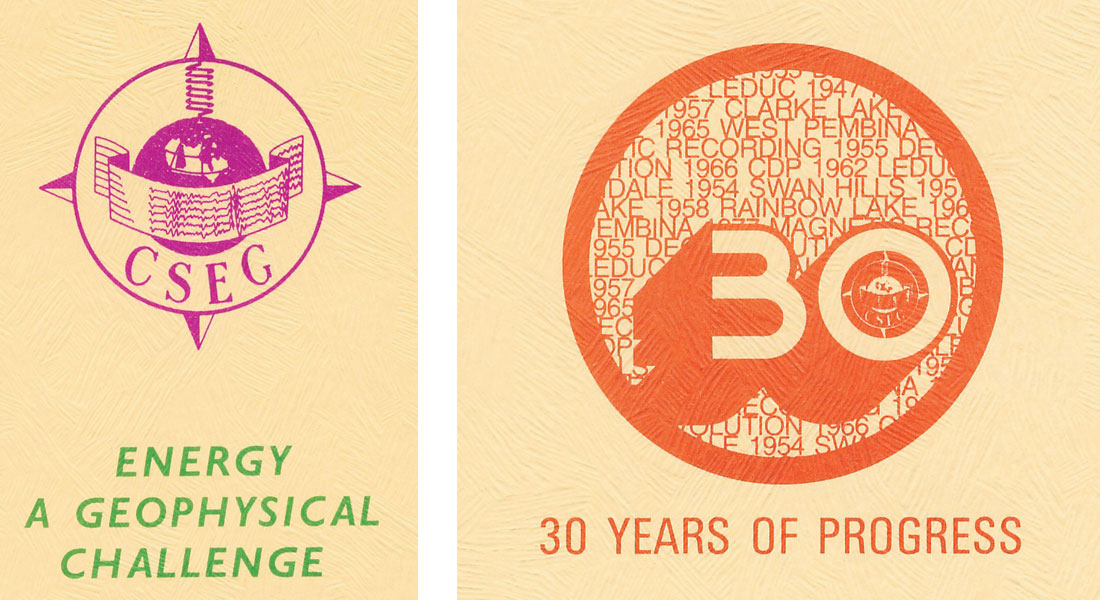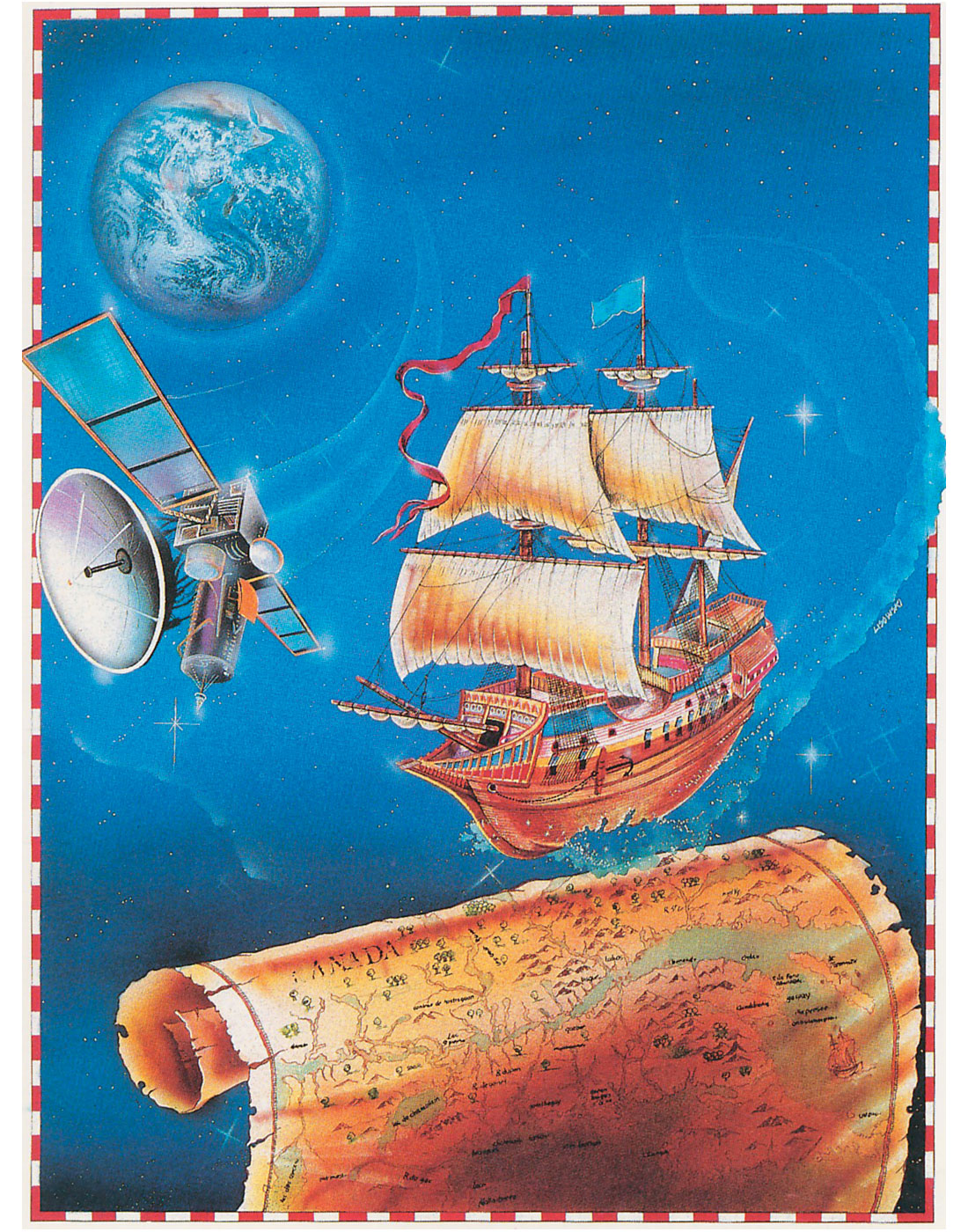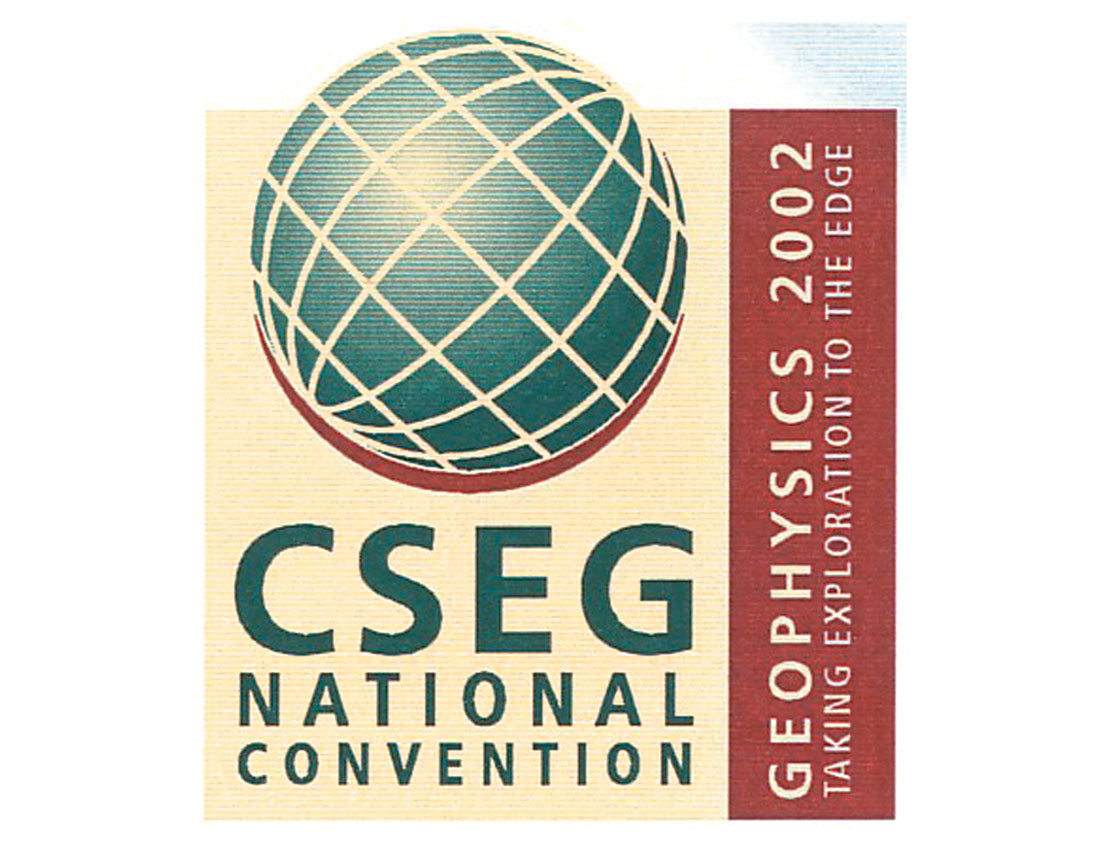The first National Convention of the CSEG was held in April, 1973 against a politically volatile backdrop. The year began with oil prices hovering in the $2.50 per barrel range. An Arab oil embargo triggered by the Arab-Israeli war disrupted oil flows and triggered panic buying; later in the year OPEC countries imposed unilateral embargoes and price increases – by early 1974 the price per barrel had risen to $11.50. Domestically, the mood was gloomy: Canadian production was seen to be peaking, with the expectation that Canada would soon become a net importer; seismic activity, indeed exploration activity in general, was at one third the level of the 1950s; the “federal government’s fiscal policies (in particular the altered royalty structure in the provinces, and the current federal budget provisions)” (John H. Harding, President’s Report, 1974 CSEG Annual Report) were highly unpopular and alarming to the geophysical community.

It was in this dramatic environment that the CSEG launched its first National Convention. The vision and foresight of the drivers behind the 1973 convention were remarkable. General Convention Chairman A.E. Pallister wrote in his introduction to the Proceedings of the 1973 National Convention, “If this nation is to maintain its present energy self-sufficiency, as the demand for energy quadruples during the next thirty years, the membership of this Society will be called upon to make an even more demanding contribution.”

“At this time, as we reach the crest of production from western Canadian oil and gas fields and direct our skills towards the development of frontier resources and widen our scope to include other sources of energy, the future involvement of exploration geophysicists will take on new dimensions, in a new era.”
“In structuring this conference, the Convention Committee set as its goal the increasing of the National base of knowledge and understanding, perhaps described as a pause before attacking the future.”

“…we made an attempt to introduce into our discussion some social and economic considerations which, as busy practitioners, we have perhaps left too much to others in the past. For it seems clear that the economic environment in which we will work and the pace at which development will take place in this new era will be increasingly determined by these external factors.”
So here we are, just over thirty years since Mr. Pallister wrote these words, and they could just as easily have been written by this year’s chair, Laurie Ross. Just as in 1973, we are faced with a new era, a post-9/11 era typified by a dangerous global climate where oil geopolitics are entangled with an escalating war of terror and ideology. Domestically we see our oil and gas production peaking, and again we are looking to the north to replace our reserves. We are faced with a new federal government that may, or may not, impose Kyoto Accord regulations, and possibly a new hydrocarbon tax. Our industry leaders, such as EnCana, Talisman, Husky, Nexen and CNRL, are increasingly becoming international players. Income trusts have thrown a wild card into the traditional exploration and development business model.

Looking back at past conventions we can see how our geophysical community perceived the challenges and opportunities of the day, and we can learn valuable lessons from their actions. Our National Conventions are critical to the Canadian geophysical community, in particular the oil and gas geophysical exploration community. These conventions provide the venue and the focus necessary to harness the collective energy and intelligence of our community and direct it towards solving the challenges facing us, or “attacking the future” in Mr. Pallister’s words.
Of course the CSEG Convention is not just all lofty ideals and serious sentiments. The convention has many faces – technical, social, financial, even humourous. Who can forget the infamous incident where a session chair, lulled to sleep by a particularly scintillating talk, fell off his chair, in the process knocking over the speaker’s lectern? Numerous social events have been held as part of the convention. Some memorable ones include 1994’s mystery offsite location where party goers were bussed off to a great space theme party held in a big indoor soccer bubble, and 2000’s SEG/CSEG outdoor Stampede style party.

The gradual change in social events is very interesting. The 1970s generation knew how to socialize and have fun (and probably drank a wee bit too much) – the events schedules are peppered with sherry parties for the ladies, dinner-dances, balls, and apparently cocktail parties whenever and wherever possible. By the 1980s, perhaps reflecting a more somber business environment, only the Icebreaker cocktail parties and Spring Balls remained, providing the opening and closing to the conventions. The 1990s reflect the struggle committees had trying to coerce the now family-bound, fitness and career obsessed demographic bulge to get out and have some fun. Convention windup parties came and went, along with a variety of other social events, as organizers struggled to find the secret formula.
Successive Convention Committees have come up with creative themes that tapped into the mood of the day, or the essence of one aspect of the exploration geophysics game. 1982’s “Geophysics – The Continuing Search” theme captured an industry that was at the start of a downturn. In General Chairman W.C. (Bill) Stroup’s welcome, he wrote , “Geophysicists are optimists by nature and we must maintain that characteristic during this present lull in activity.” Despite trying economic circumstances, the convention that year featured seven technical sessions, thirty-nine papers, geophysics icon Tuzo Wilson as luncheon speaker, and a Spring Ball organized by Sheila Fenwick and Judi MacDonald. The Best Paper Award for 1982 was jointly won by two Convention papers, “Use of Vertical Seismic Profile to Investigate a Multiple Problem in Western Canada” by Dan Hampson (Veritas) and Larry Mewhort (Hudson’s Bay Oil & Gas), and “ Gravity Inversion in Western Canada” by K.F. Sprenke and E.R. Kanasewich of the University of Alberta.

More recently, in 2001, we had Jim Stenhouse and Lee Hunt’s Greek theme – The Odyssey Continues. This theme, featuring sessions with names such as “The Sword of Damacles”, provoked a strong reaction as delegates either loved or loathed it. Either way, it generated strong interest and provided a strong central theme to a highly successful convention. Looking through past convention slogans one gets an impression of enthusiasm, excitement, and optimism: “Exploring New Horizons”, “Geophysics – A Creative Science”, “Exploring the Next Decade”, “Broadening the Spectrum”, “Energy in Motion”, “Geophysics ~ Key to Recovery”, “Taking Exploration to the Edge”.
But the CSEG has a two-pronged mission, not only to promote fellowship amongst its members, but also, perhaps more importantly, to promote the science of geophysics. Since its inception, the National Convention has been front and centre in terms of fulfilling these goals.
As a showcase for the latest technology and leading edge scientific research, the Convention has been extremely important. Many landmark papers have been delivered, and careers established, at the CSEG Convention. The list of Best Papers represents a series of milestones in the evolution of geophysical techniques. To mention a few: “Determination of Seismic Response from Well Logs and its Application to Seismic Stratigraphic Models”, John D. Boyd, Ross E. Crain, 1978; “Rapid Diagenesis of Marine Turbidites in the Winona Basin, West Coast Canada”, Dr. Ron Clowes, Dr. Earl Davis, 1981; “3- D Seismic – A Cost Effective Approach”, Fred M. Peterson, Wilf C. Reynish, 1983; “Seismic Resolution and Field Design, Success and Failure at Taber”, Gary Taylor, 1984. While only one paper per year, or perhaps two, will win Best Paper, the Conventions have featured scores and scores of high quality technical papers that have served as valuable references in the ensuing years, and they document the steady technical march forward of our community.

There is another aspect to the CSEG National Conventions that at times generates some controversy. Over the last thirty years the society has come to depend on the revenue generated by the annual Conventions. A large part of the CSEG’s operating expenses is covered by Convention income. Particularly during periods of low seismic activity, the many service companies who provide the most of the Convention revenues generated, through their exhibit floor booths and delegates, feel angry that a non-profit society is making huge profits, especially since many of them are operating in the red. On the other hand, windfall Convention revenue years have allowed the CSEG to fund worthy causes such as the Chair in Geophysics at the U of C, and the CSEG scholarship program. Additionally, with the roller coaster nature of the seismic industry, it is only prudent that the CSEG maintains a war chest for skinny years. Another source of controversy has been the regular (every fourth year) joint conventions with the CSPG. Again, some of the contractors feel the CSPG is milking the CSEG (and indirectly the geophysical service sector), since their own conventions are not as well sponsored.

This year’s Convention theme, “Great Explorations, Canada and Beyond”, with its combined historical and looking forward flavour, provides a perfect time to reflect on past conventions and achievements. Our own efforts and achievements are built on the foundation provided to us by our predecessors, and it is our responsibility to learn from their successes and failures, and to “attack the future”. Just as previous generations faced challenges and opportunities, so too do we. On the technical side we need to develop new technology that will allow oil and gas companies to take another step forward in their quest to supply the world with an energy supply; on the business side we need to adapt to a changed environment where we must increasingly look overseas and to our own frontiers, and all the while still appear attractive to the investment community; on the social side we must continue to foster a sense of community in our ranks, for it is this collective strength that has provided us with the platform for success in the past.
In summary, through our CSEG National Convention, we need to focus and harness our collective talents, for just as we have benefited from the efforts of those that came before us, so too will tomorrow’s geophysicists depend and build on our current efforts. Celebrate the past, and attack the future!











Join the Conversation
Interested in starting, or contributing to a conversation about an article or issue of the RECORDER? Join our CSEG LinkedIn Group.
Share This Article